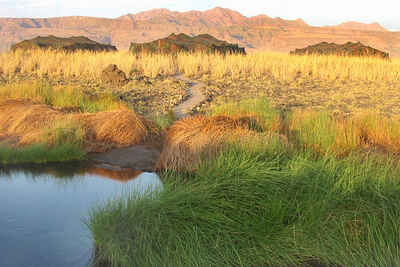About Lake Natron Camp
Situated close to Lake Natron, Ngare Sero Lake Natron Camp sits on the surrounding grassy flats.
(Note that this camp is often simply called 'Lake Natron Camp' but should not be confused with the nearby Lake Natron Tented Camp.) It is a very open environment here, so each tent and the main mess tent are sheltered under a thick camouflage netting/mesh. This allows the light and lovely breeze through, but softens the suns rays and heat dramatically. The camp also sits alongside a natural spring which feeds into a nearby soda lake − a swim in the cool water is also a great way to combat the heat.
Lake Natron Camp is certainly one of the most unusual camps we have ever stayed in. Though rather rudimentary, it is also quite fun. The style is unique and there is a sense of adventure in the design itself. Its simplicity fits the harsh environment; anything lavish might have felt gaudy or inappropriate, nestled in amongst the surrounding Maasai villages.
When we last visited in June 2008, we also felt that Lake Natron Camp had a great atmosphere. The team bent over backwards to make sure that we enjoyed our stay. We recommend it as a comfortable, albeit simple, base from which to explore Lake Natron.
Our view
Lake Natron Camp is certainly one of the most unusual camps we have ever stayed in. Though rather rudimentary, it is also quite fun. The style is unique and there is a sense of adventure in the design itself. Its simplicity fits the harsh environment; anything lavish might have felt gaudy or inappropriate, nestled in amongst the surrounding Maasai villages.
When we last visited in June 2008, we also felt that Lake Natron Camp had a great atmosphere. The team bent over backwards to make sure that we enjoyed our stay. We recommend it as a comfortable, albeit simple, base from which to explore Lake Natron.
Accommodation
7 tents
Children
Best for 5+
Open
All year
Activities

Private activities
Traveller reviews of Lake Natron Camp
1 real, un-edited reviews from Expert Africa's travellers.
Arrived 1 Jul 2011, 2 nights
"Flamingoes, tilapia and Masai - perfect"
Overall rating: Excellent
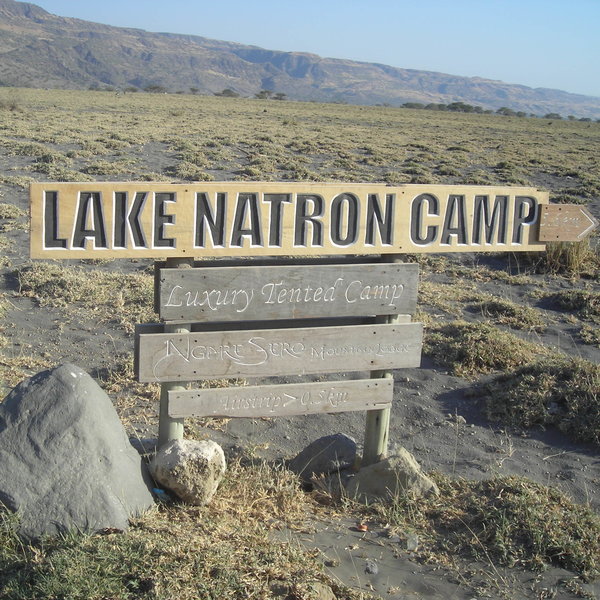
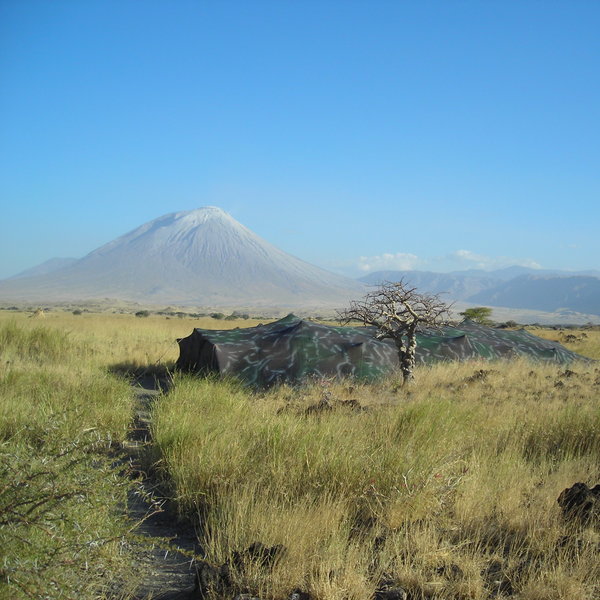
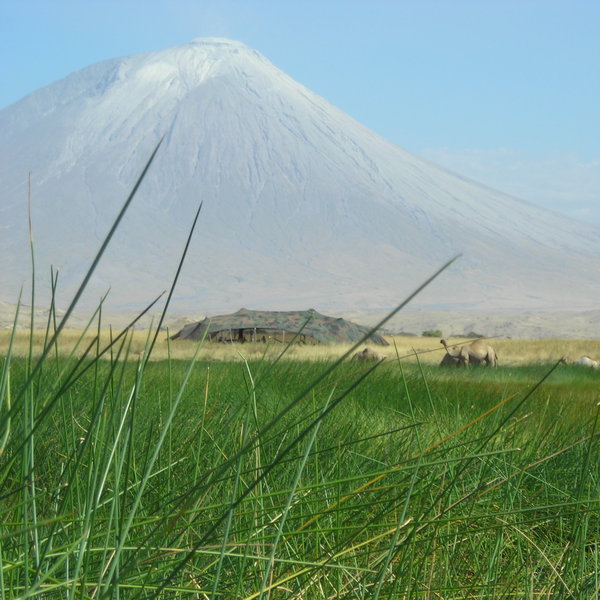
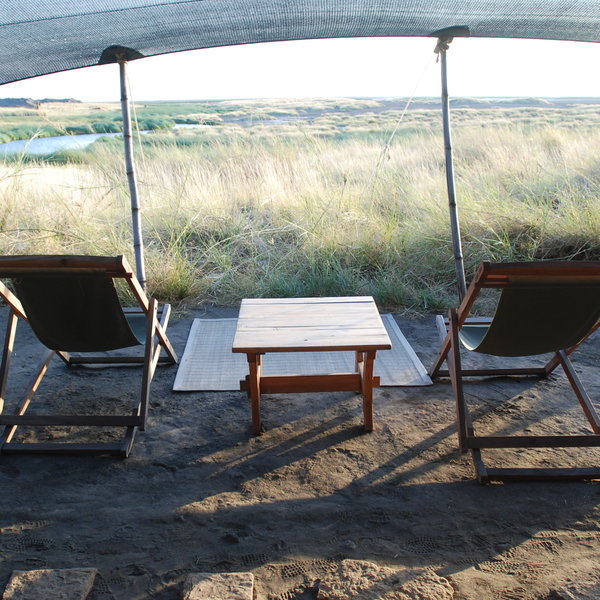
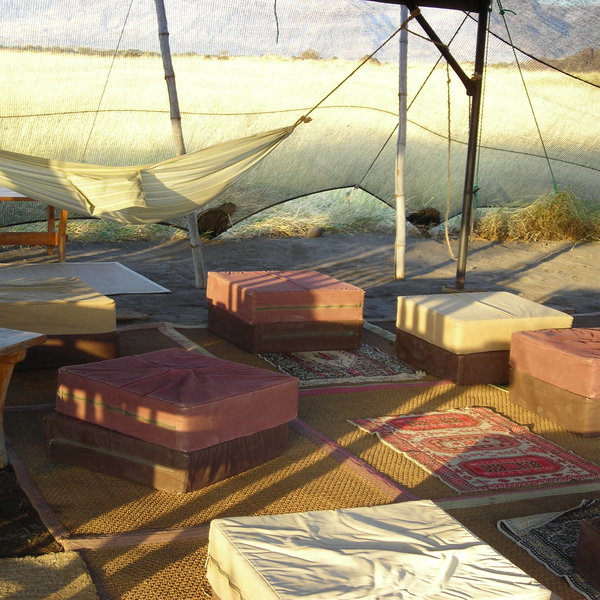
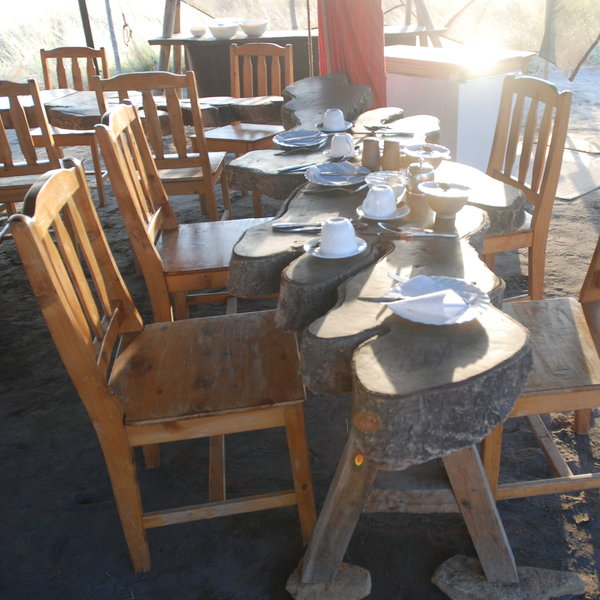

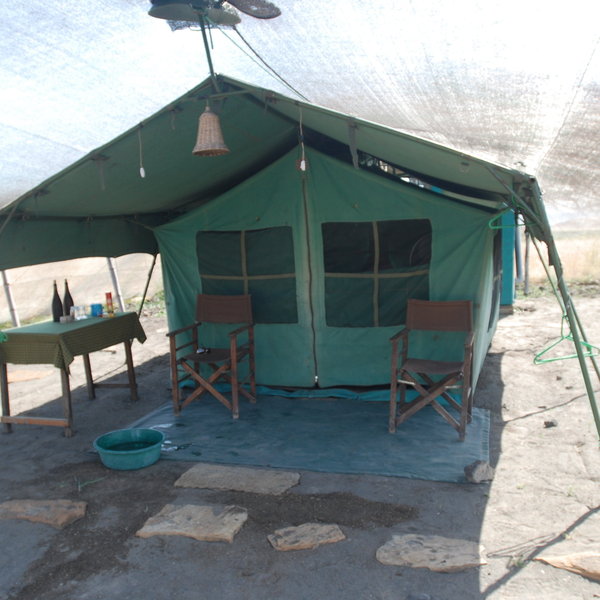
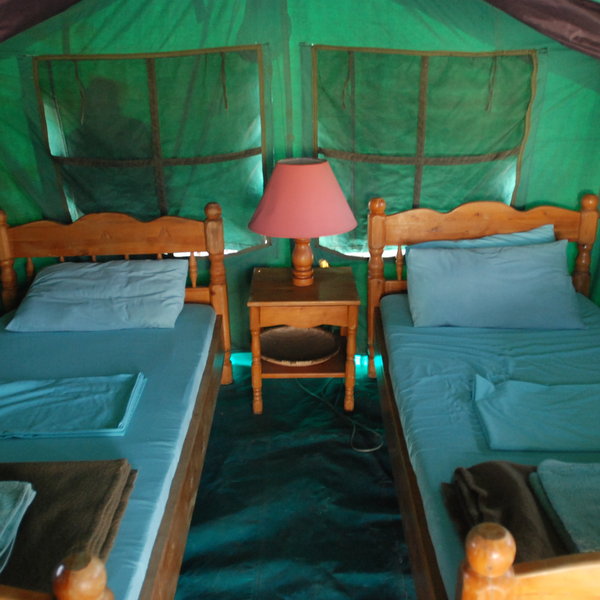
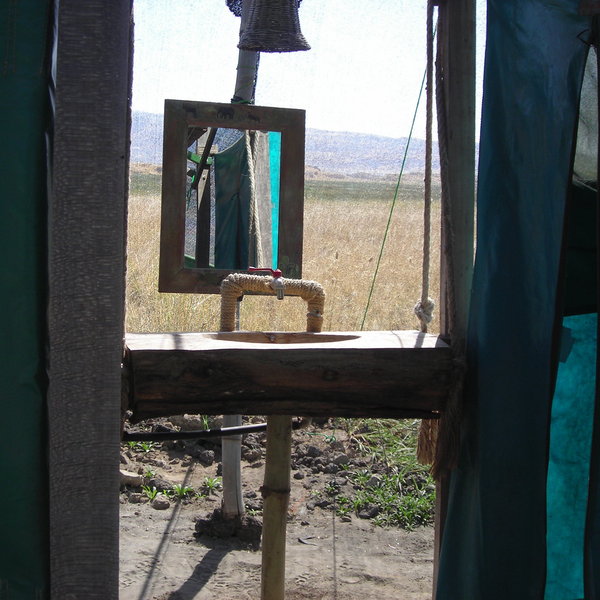
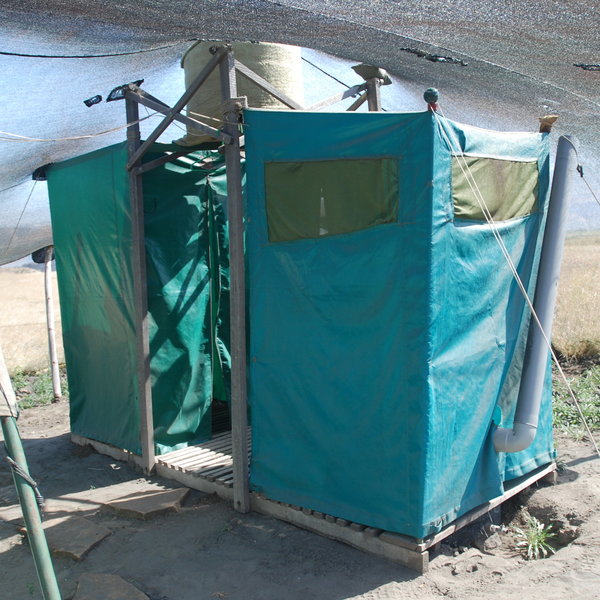
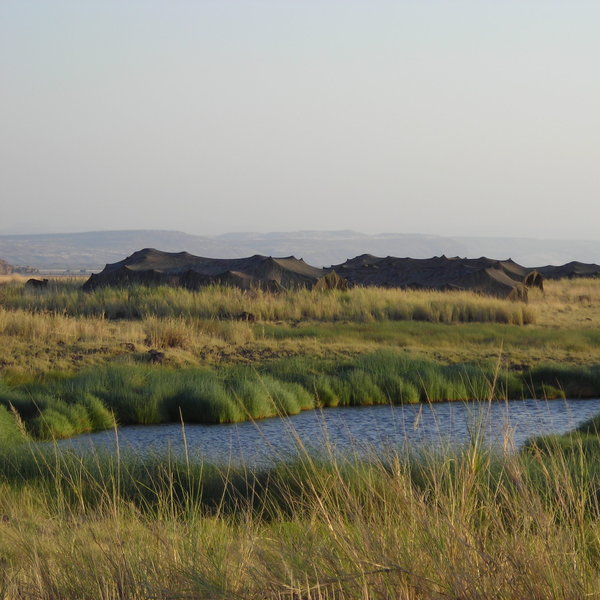
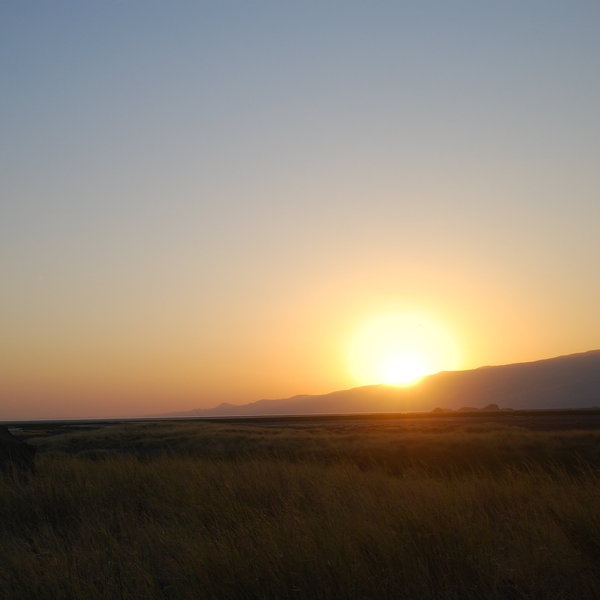
Expert Africa's gallery
When we travel we take lots of photos ourselves to give you a real and un-edited view of the safaris. See our 69 pictures of Lake Natron Camp to get the candid view.
View galleryLake Natron Camp: Our full report
Situated close to Lake Natron, Ngare Sero Lake Natron Camp sits on the surrounding grassy flats.
(Note that this camp is often simply called 'Lake Natron Camp' but should not be confused with the nearby Lake Natron Tented Camp.) It is a very open environment here, so each tent and the main mess tent are sheltered under a thick camouflage netting/mesh. This allows the light and lovely breeze through, but softens the suns rays and heat dramatically. The camp also sits alongside a natural spring which feeds into a nearby soda lake − a swim in the cool water is also a great way to combat the heat.
Due to its close location to the lake, Ngare Sero Lake Natron Camp makes a concerted effort to be very environmentally aware. The tents each have a compost toilet and the water comes from the natural spring where an osmosis filter system makes it safe for drinking. The camp is designed, so that if it were dissembled, there would be no trace of it and the landscape could be totally restored.
Ngare Sero is also highly involved with the local community. The camp has a special concession with the village of Engare Sero, which lies only 7km away. As a simple form of 'ground rent' for their spot beside the lake, the camp pays the village $20 per guest per night plus an annual rental fee. These proceeds are collected into a fund, which is used for the advancement of primary and secondary education in the area. Ngare Sero Lake Natron Camp are also involved in various other community projects that have been requested by the villagers themselves.
The activities from Ngare Sero Camp include a walk to the Engaro Sero Falls, a three-hour round trip which cuts through a rocky gorge, complete with bubbling shallow river, until you reach the waterfalls. Visiting in 2008, we loved this cool walk after the heat of the lakeside – and had a very refreshing swim before we headed back down to the camp.
You can also walk out to the shore of Lake Natron with a Maasai guide from Ngare Sero, to see the flamingoes feeding on the algae. Small hills dot the mostly flat ground around Lake Natron, and when doing this walk we continued to walk up some them, which gave great views across the lake and back towards the impressive volcano – Oldoinyo Lengai. Doing this walk in the evening, it was great to stop atop of one of these hills for a sundowner drink – the sunset was spectacular, and one of our fondest memories from our time at Lake Natron.
More intrepid travellers do occasionally take on the six-hour climb to reach the top of the active volcano, Oldoinyo Lengai. We're told that this is best started at midnight. It is very challenging and we regard it as dangerous, and so cannot recommend it to our travellers – though that is, of course, up to every individual.
The mess tent sits under the netted mesh and has a Bedouin design, with large cushions strewn across the floor and Persian rugs dotted around. There are a few hammocks to relax in, and one long wooden table for dining. Though the room is quite simply furnished, it has a comfortable and inviting atmosphere. It is certainly a pleasant spot to sit and have a drink, and enjoy the tasty meals.
The accommodation at Ngare Sero Lake Natron Camp are highly unique, and called “bedu shade tents". These are designed and apparently even patented by Timothy Leach – the owner and director of Lake Natron Camp. They are certainly some of the most unusual tents we have ever stayed in. Each tent is covered by a separate, wide shaded mesh net. This net helps to cut down the heat, and though the rooms are still hot during the day, they are far cooler than they might be.
Still shaded by the netting, but outside the tent, each has a lounge area with a pair of directors' chairs and a deck chair. There is also an outside table where you will find drinking water, glasses and mosquito repellant. Each also has a private path to the stream, where you can have a cool dip – very welcome after a day of activities.
Behind each tent, still under its shaded netting, each has a private compost toilet and shower. The shower does not have a hot and a cold tap, but is instead one warm temperature – heated by the sun in a tank above. Both the shower and the toilet are in slightly separate cubicles, encircled by green canvas and on wooden slatted platforms.
Visiting in late 2008, Ngare Sero's tents did look rather tired and worn, and were also quite small inside – although the large extent of their shading mesh did provide each with a much larger private shaded space. We felt that the tents could do with replacing, but they are functional and fine as a base for a few nights to explore the area. The shade netting is ingenious; we think it's a great idea!
Activities
Private activities
Families & children
- Attitude towards children
- Property’s age restrictions
- Children must be aged five or above to stay at Ngare Sero Lake Natron Camp.
- Generally recommended for children
- We wouldn't really recommend this area to children, it is a long and hot drive to reach Ngare Sero Lake Natron Camp and it is a very harsh environment when you arrive.
Food & drink
- Usual board basis
- Full Board & Activities
- Food quality
- The food here is tasty and hearty, but nothing overly lavish - it is good food cooked well.
At breakfast – there is usually a buffet of cereals and fruits to which you can help yourself to. There is also a cooked breakfast available, which consists of eggs, bacon and toast.
We skipped lunch when we were here in June, though we were told that guests can expect a light starter of salad or soup. Then a main course of vegetables and meat, after which a desert such as fruit salad is served.
As with the other meals, dinner was hearty, filling and tasty. There were three courses, all of which were a self service buffet. To start with we had cream of tomato soup with fresh-baked bread. Then the main course was baked rainbow trout with vegetables. Desert was a deliciously rich chocolate mousse.
There was a good selection of South Africa wines to accompany the meals. - Dining style
- Group Meals
- Dining locations
- Indoor Dining
- Further dining info, including room service
- Yes – on request.
- Drinks included
- Drinks are not included at Ngare Sero Lake Natron Camp, though they are relatively inexpensive. A soft drink costs around $1, and a beer approximately $3.
Getting there
- Location
- Lake Natron, Tanzania
- Ideal length of stay
- Stay at Ngare Sero for 2 nights to explore the area and do most of the activities on offer. Though stay for three if you want to explore more of the area and can handle the heat.
- Directions
- Lake Natron Camp is about 4 hours' drive from the turn-off at Lake Manyara, or about 6 hours' from Arusha. There is no registered airstrip, so driving is the only option – and all of our travellers will be driven here by one of our guides.
- Accessible by
- Fly-and-Transfer
Special interests
- Photography safaris
- Lake Natron's scenery is stark and spectacular. Photograph it around dawn and dusk when the light on the surrounding hills, especially Oldoinyo Lengai volcano, is breathtaking. The lake is often home to flamingos and some of the local Maasai welcome visitors.
- See ideas for Photography safaris in Tanzania
Communications
- Communications
- There is no cell phone reception in the area of Lake Natron Camp, though the camp plans to get a satellite phone for emergencies. They currently use a short-wave radio to contact the office.
Health & safety
- Malarial protection recommended
- Yes
- Medical care
- Ngare Sero Lake Natron Camp has a first aid kit and links to the flying doctor service for emergencies.
- Dangerous animals
- Moderate Risk
- Security measures
- There are 'askaris' and Maasai guards at the camp.
- Fire safety
- There are fire extinguishers dotted around the main area.
Useful info
- Disabled access
- Not Possible
- Laundry facilities
- Laundry is an extra charge – larger items cost around $2. Leave 24 hours as the clothes are hand-washed and line dried.
- Money
- There are no currency exchange facilities here.
- Accepted payment on location
- Guests can pay using Tanzanian shillings and US dollars in cash. Travellers' cheques are also ok and there is no charge.
Plan and book your trip with Expert Africa
All of our trips are tailor-made, so we'll always adapt them to suit you. Talk to an Expert and let us plan and arrange your perfect trip.

Talk to an Expert
Call or email us now! We’ll match you with the Specialist in our team who is best suited to help you. Then together we can start planning your trip.

Set up your itinerary
Based on our experience and your ideas, your specialist will create a detailed, costed itinerary. We’ll refine it together, until we have a trip that you’re perfectly happy with.

Prepare for your trip
The same Specialist will make the seamless arrangements for your trip, send you detailed travel documents, and be available to answer any questions before you depart.

Travel with peace of mind
After you set off, you’ll be cared for by our partners in Africa, most of whom have worked with Expert Africa for decades. And if you ever need us urgently, we’re available 24/7.

When you return
We love to learn about your trip, and so will always be grateful if you’ve the time to give feedback to your Specialist when you return.
Lake Natron Camp's location
Look closer at the environment and surroundings of Lake Natron Camp.
Other lodges in Lake Natron
Alternative places to stay in this same area.
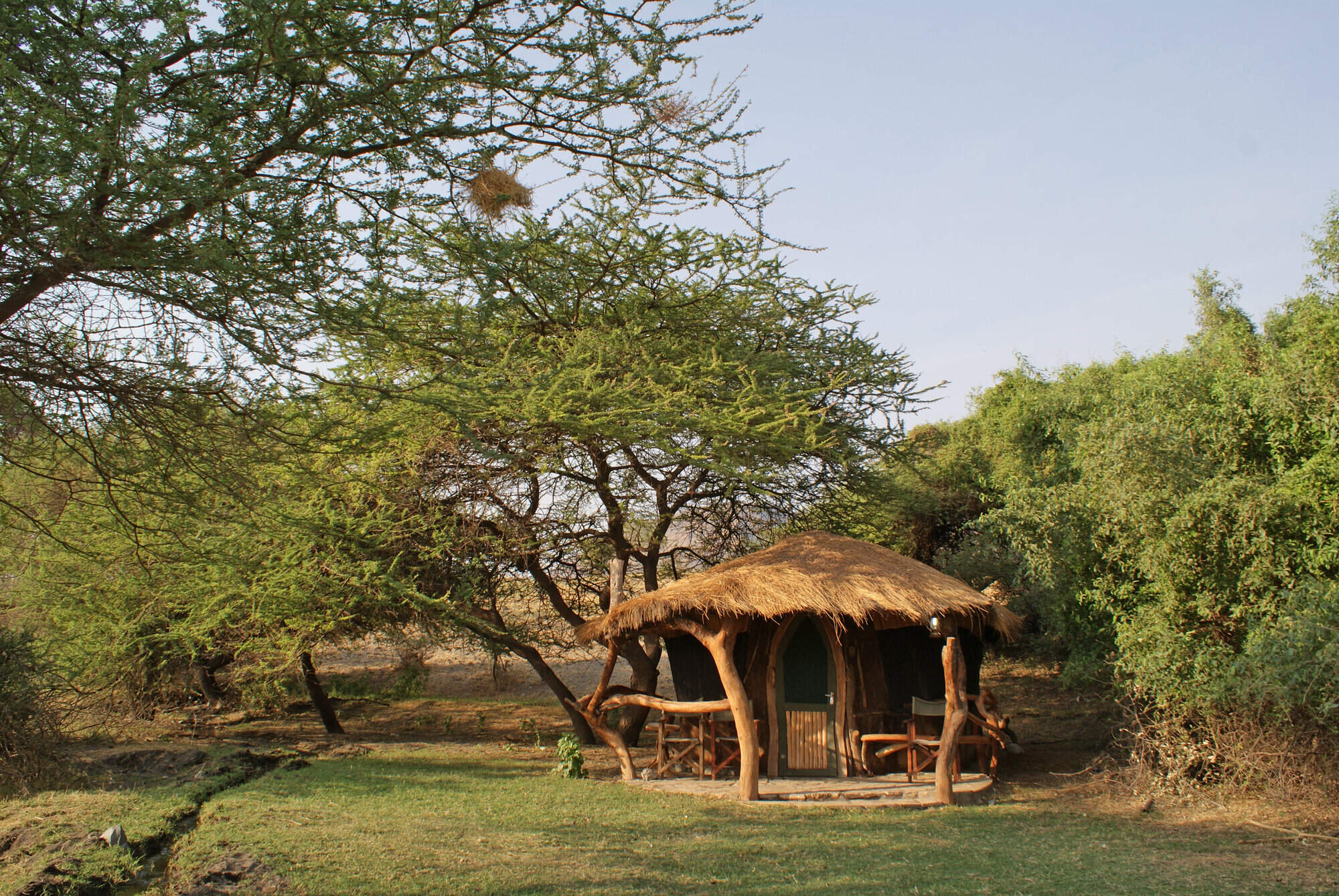
Moivaro Natron Tented
Sitting in an oasis of green under a shady acacia woodland, this camp provides a relatively cool spot for exploring this area.
When to go to Lake Natron
Our month by month guide: What it's like to visit Lake Natron Camp in Lake Natron
Jan
Feb
Mar
Apr
May
Jun
Jul
Aug
Sep
Oct
Nov
Dec
Tanzania in January
January usually marks the start of the short dry season, although the exact timings of this are a little unpredictable. You can expect clear blue skies and sunshine, if the short rains have stopped, and the temperatures will be building. The short dry season is a little less pronounced in Southern Tanzania, and so it can still be wet in these areas. It is an interesting time for avians as resident birds go into breeding plumage and migrant species can be present.
Once the New Year busy period has quietened down, January can offer great value and quieter parks, although the weather can be variable, and in the Selous and Ruaha the wildlife is more dispersed.
- Variable weather: clear & dry or cloudy with some rain.
- Occasional thunderstorms may occur.
- A good time of year for birding as and many migrant species are around
- The wildebeest migration is gathering in the southern Serengeti.
- Busy in early January, quietening down through the month.
Our view
A good time to visit, with pros & cons
Weather in January
Tanzania in February
February is during the short dry season and is one of the hottest months in Tanzania, with temperatures reaching around 33°Celsius. This can be a good time to visit, as some areas of the Northern Circuit are comparatively quieter than during the European summer months, and lodge rates are also a little lower.
The wildebeest will typically be on the southern plains of the Serengeti for their calving season, which tends to occur in a 2-3 week window in early-mid February – although this does vary year on year. This is also a particularly rewarding time for birdlife, as northern hemisphere migrants join the resident species.
- Hot and dry weather.
- Wildebeest migration calving on Serengeti’s southern plains.
- Ngorongoro Crater and southern Serengeti busy for the migration.
- Selous and Ruaha are typically quiet at this time.
- The parks are likely to be lush and green, leading to pretty landscape
Our view
A very good time to visit
Weather in February
Tanzania in March
The heavier ‘long rains’ start in earnest in March although exactly when varies year on year. With no need to stay close to permanent water sources, migratory wildlife disperses, and so game viewing starts to become more challenging. This is most prominently seen in Tarangire National Park. The wildebeest migration may still be calving, or have moved on into the central regions of the Serengeti.
Many of the camps in the southern parks close mid March and mobile tented camps in the Serengeti will wind down towards the end of the month in order to move location or carry out refurbishments, ready for the new tourist season.
- Hot with building humidity, before the rains begin at some point.
- Wildlife viewing is variable depending on the start of the rains.
- Parks are quiet and rates are low.
- Not great for southern or western Tanzania.
- March can be a good time for birding, with many migrant species.
Our view
A good time to visit, with pros & cons
Weather in March
Tanzania in April
April is in the middle of the long rainy season and is the wettest month, with on average 250mm of rain. Temperatures are fairly high and humid in comparison to the rest of the year. Expect the bush to be lush and flowering, and alive with insects, birds and smaller animals. It is however also dense, allowing wildlife to hide, which in turn makes game viewing harder. This is a very quiet time in terms of visitor numbers.
Many of the tented camps are closed in April, however the larger lodges remain open. The rates are significantly cheaper, and so if you are willing to work harder to spot the bigger game, some accommodation bargains can be had.
- Heavy rain expected, with impressive thunderstorms and lightning.
- Many camps closed and roads impassable due to ground conditions.
- Rates are at their lowest all year round, with very few other tourists
- Places that are open are green and vibrant, wildlife more dispersed.
Our view
This is not a great time to visit
Weather in April
Tanzania in May
As Tanzania is close to the equator there is no dramatic difference in climate throughout the year, but temperatures do start to drop a little in May. The rains are likely to still be present, although potentially clearing towards the end of the month. Visitor numbers and lodge rates are still low. The wildebeest migration is making its way through the western regions of the Serengeti, crossing the Grumeti River.
Virtually all camps in southern Tanzania remain closed, and many of the roads and tracks in the Selous become impassable.
- Heavy rains and storms are likely, this can create some dramatic skies
- Blissfully quiet in northern Tanzania, and a good time to avoid crowds
- The parks are likely to look lush and green, with long grass.
- Wildlife is likely to be more dispersed, with fewer sightings.
- The low prices make safaris much more affordable at this time.
Our view
This is not a great time to visit
Weather in May
Tanzania in June
The rains come to an end at some point during the month and migratory wildlife begins to be drawn back to perennial water sources as the land starts to dry up. It’s likely that the parks will still be quite green and the grass high though, so walking and fly-camping may be unlikely. This marks the start of the season with camps reopening, but prices are still more affordable than the subsequent months.
The migration may still be in the Western Corridor, or on the move northwards towards the Mara River. Western Tanzania presents more challenging conditions for chimpanzee trekking in Mahale National Park, as the chimps are higher in the mountains.
- Variable weather: clear & dry or cloudy with some rain.
- A transitory time for the migration – moving from west to north.
- The parks may still be quite green, and grasses high.
- Wildlife may be dispersed still.
- Relatively low visitor numbers and good value, shoulder season prices.
Our view
A good time to visit, with pros & cons
Weather in June
Tanzania in July
July is considered to be the start of the peak season, with no rainfall expected and pleasant daytime temperatures. As the parks dry, the wildlife congregates in fewer areas, grass is eaten and trampled by the migration, and game viewing gets better and better. The wildebeest are typically arriving in the northern Serengeti, ready to begin their period of crossings of the Mara River.
In the Selous and Ruaha wildlife sightings can be fantastic, with animals gathering around the lakes and rivers. Great conditions and school holidays mean the parks are at their busiest, with Ngorongoro and the Serengeti particularly crowded.
- Dry and warm daytimes, chilly and windy in the mornings and evenings.
- Great wildlife viewing, as water sources diminish.
- The most popular time of year with very high visitor numbers.
- Prices are at their highest due to the great conditions on the ground.
- To avoid the crowds consider Tanzania’s southern parks.
Our view
Fantastic: the very best time to visit
Weather in July
Tanzania in August
August is the middle of the long dry season, with clear skies and sunny weather. You can expect some cooler weather at night and first thing in the morning. Remember to pack layered clothing, so you can wrap up warm on your early morning game drives, but remain comfortable as it heats up throughout the day.
August is a very popular time to visit, so accommodation prices are at their highest and advanced booking is necessary. It can get noticeably busier in some of the northern parks – in particular the Ngorongoro Crater and northern Serengeti, as visitors flock to the area in hope of witnessing an exciting migration river crossing.
- Dry and warm daytimes, chilly in the early mornings and evenings.
- General wildlife viewing should be excellent.
- An exciting time of year for the wildebeest migration.
- Certain areas will be very busy and camps fill up fast.
- Great wildlife sightings in the Selous and Ruaha, and fewer people.
Our view
Fantastic: the very best time to visit
Weather in August
Tanzania in September
September can be an excellent time of year to visit Tanzania. As the parks continue to dry up the wildlife becomes increasingly reliant on the remaining water sources, leading to high densities of animals. Whilst early September can be busy, with fewer families traveling at this time the parks typically become quieter as the month goes on.
You are still likely to see the wildebeest migration in the northern Serengeti, with river crossings occurring on a regular basis. Tanzania’s southern parks are also fantastic at this time of year, generally receiving far fewer visitors than the north, and wildlife sightings can be great. Prices remain high and the weather generally remains good.
- Wildlife viewing in September can be fantastic.
- Whilst still fairly busy, often the parks are typically a little quiet
- The parks will start to become very dry, with little new vegetation
- Cooler mornings and evenings, warming up during the day.
- Prices remain high.
Our view
Fantastic: the very best time to visit
Weather in September
Tanzania in October
At the tail end of the dry season, the wildlife should be the easiest to spot, although photographers should be aware that it can be a bit dusty at this time of year, as there has been no rain for several months. Great general wildlife viewing throughout as animals are attracted to remaining sources of water. Elephant numbers are particularly high at this time in Tarangire, and Mahale and Katavi are especially rewarding with frequent wildlife sightings close to camp.
There is a chance of rainfall towards the end of the month, if the short rains commence. While prices remain high, visitors numbers are significantly lower than in July-August.
- Mostly dry and temperatures comfortably warm, with the chance of storm
- Great game viewing although the landscape can be a bit barren.
- Much lower visitor numbers than the earlier months.
Our view
A very good time to visit
Weather in October
Tanzania in November
In November you can expect the start of the short rains, although the start date varies every year. The rains are highly localised, and are much lighter and more unpredictable than the long rains that occur earlier in the year. These should not really interfere with your safari – as the game viewing at this time is still good - but you should pack a waterproof jacket and be prepared for some short rain showers!
The majority of tented camps remain open, but some of the mobile camps in Northern Tanzania will close for the latter half on the month. Given the seasonality, camps are charging shoulder season rates so there are often some bargains to be had. Early November can offer great value for money and the weather conditions are likely to be comparable to late October.
- Variable weather: clear & dry or cloudy with some rain.
- Parks are comparatively quiet and prices at the lower end.
- Some camps will close towards the end of the month for maintenance.
- Good wildlife sightings, but animals will disperse when rain starts
- The wildebeest migration is on the move and the location unpredictable
Our view
A good time to visit, with pros & cons
Weather in November
Tanzania in December
December is also during the short rainy period, but this does not stop Tanzania being a popular destination to spend the festive period. Be aware that many of the lodges book up early, and charge peak rates over this time. Advanced booking is essential over this period, especially if travelling in larger family groups.
Travelling in December outside of the festive period allows travellers to make use of excellent shoulder season rates. Temperatures are pleasant with the averages of 27Celsius, although there is the chance of intermittent thunderstorms.
- Variable weather:clear & dry or cloudy with some rain and thunderstorm
- Good general game viewing in parks with low seasonality - Serengeti.
- Very quiet early in the month, becoming exceptionally busy.
- Prices reflect this – great value rising to the highest they are.
- The wildlife in southern Tanzania is more dispersed.
Our view
A good time to visit, with pros & cons
Weather in December

Looking for inspiration on where to travel next?
Visit our trip chooser to explore your options and find inspiration for your perfect African adventure
Inspire me